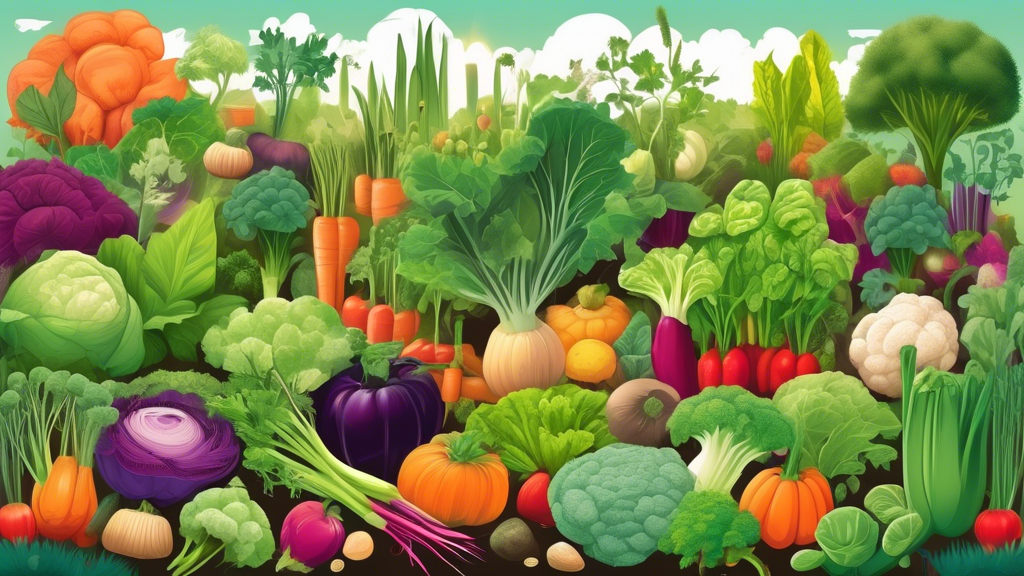Introduction
Companion planting, a time-tested gardening technique, involves strategically planting different crops in close proximity to leverage their natural interactions for mutual benefit. This practice, rooted in ecological principles, offers a myriad of advantages, particularly in promoting plant health and maximizing yields. By understanding the synergistic relationships between companion plants, gardeners can create a thriving ecosystem that naturally deters pests, enhances nutrient availability, and improves overall garden vitality.
Pest Control Through Companion Planting
One of the most significant benefits of companion planting lies in its ability to naturally control pest populations. By intermingling plants with different scents, growth habits, and pest-repelling properties, gardeners can create a confusing and less hospitable environment for common garden pests.
Repelling Insects with Aromatic Herbs
Aromatic herbs, such as basil, lavender, rosemary, and mint, are renowned for their strong fragrances that effectively deter a wide range of insects. Planting these herbs alongside vulnerable crops like tomatoes, cucumbers, and beans can significantly reduce infestations from aphids, spider mites, whiteflies, and cabbage worms.
Confusing Pests with Diverse Plantings
Creating a diverse planting scheme can disrupt the ability of pests to locate their preferred host plants. Insects often rely on visual and olfactory cues to find food sources. By interspersing vulnerable crops with a variety of companion plants, gardeners can mask these cues, making it harder for pests to navigate and establish themselves.
Attracting Beneficial Insects
Companion planting can also attract beneficial insects, such as ladybugs, lacewings, and parasitic wasps, which act as natural predators to common garden pests. Plants like dill, fennel, and cilantro produce flowers that attract these beneficial insects, creating a natural defense system within the garden.
Enhancing Nutrient Availability Through Companion Planting
Beyond pest control, companion planting plays a crucial role in enhancing nutrient availability in the soil, fostering healthier plant growth and increased yields.
Nitrogen Fixation with Legumes
Leguminous plants, including beans, peas, and clover, have the remarkable ability to fix atmospheric nitrogen into the soil through a symbiotic relationship with nitrogen-fixing bacteria in their root nodules. Planting legumes as companions to nitrogen-demanding crops like corn, broccoli, and squash can significantly enhance nitrogen availability, reducing the need for synthetic fertilizers.
Deep Root Systems and Nutrient Mining
Companion planting with plants possessing deep root systems, such as carrots, radishes, and parsnips, can improve soil structure and nutrient access for shallower-rooted crops. These deep-rooted plants act as natural bio-drills, breaking up compacted soil and bringing nutrients from deeper layers to the surface, benefiting neighboring plants.
Nutrient Cycling Through Organic Matter
Companion planting often involves incorporating plants with different growth habits and decomposition rates. For instance, planting fast-growing, nutrient-rich species like buckwheat or comfrey as cover crops can improve soil fertility. As these plants decompose, they release nutrients back into the soil, enriching it for subsequent plantings.
Improved Plant Health and Growth
Companion planting fosters a healthier growing environment, leading to more robust plants and increased yields.
Enhanced Pollination
Attracting pollinators, such as bees, butterflies, and hummingbirds, is crucial for successful fruit and vegetable production. Companion planting with flowering plants like borage, sunflowers, and zinnias can entice these essential pollinators to the garden, increasing pollination rates and improving fruit set.
Disease Suppression
Some companion plants possess natural antifungal and antibacterial properties that can help suppress soilborne diseases. For instance, planting garlic near roses or onions near carrots can help deter fungal infections, promoting healthier plant growth.
Improved Soil Structure
The diverse root systems of companion plants improve soil structure, aeration, and drainage. This enhanced soil environment promotes beneficial microbial activity, essential for nutrient cycling and overall plant health.
Examples of Beneficial Companion Plantings
Here are a few examples of companion planting combinations that offer numerous benefits:
Tomatoes and Basil
Planting basil alongside tomatoes not only enhances the flavor of both crops but also deters tomato hornworms, whiteflies, and aphids. Basil also improves soil health and may even enhance the growth and flavor of tomatoes.
Carrots and Onions
The pungent odor of onions effectively deters carrot root flies, while carrots deter onion flies. This classic companion planting combination promotes healthy growth and minimizes pest damage.
Cucumbers and Nasturtiums
Nasturtiums act as trap crops, attracting aphids and other pests away from cucumbers. They also add a splash of color to the garden and produce edible flowers.
Corn, Beans, and Squash (Three Sisters)
This traditional Native American companion planting technique benefits all three crops. Corn provides a sturdy stalk for beans to climb, beans fix nitrogen into the soil, and squash vines suppress weeds and retain soil moisture.
Conclusion
Companion planting offers a holistic and sustainable approach to gardening, promoting plant health, maximizing yields, and minimizing the need for synthetic inputs. By embracing the principles of this time-tested practice, gardeners can create a thriving ecosystem that benefits plants and the environment. Whether it’s repelling pests, enhancing nutrient availability, or attracting beneficial insects, the strategic pairing of companion plants unlocks a world of possibilities for a more productive and rewarding gardening experience.


